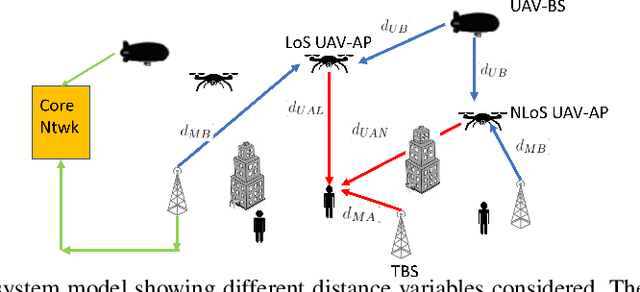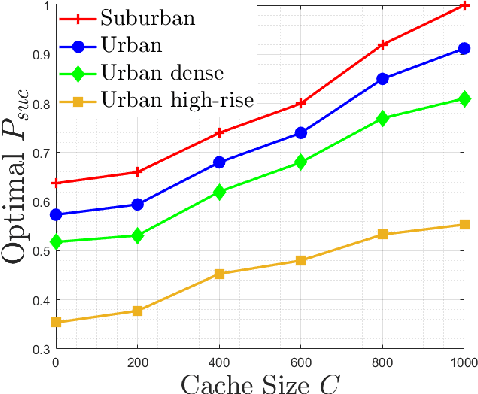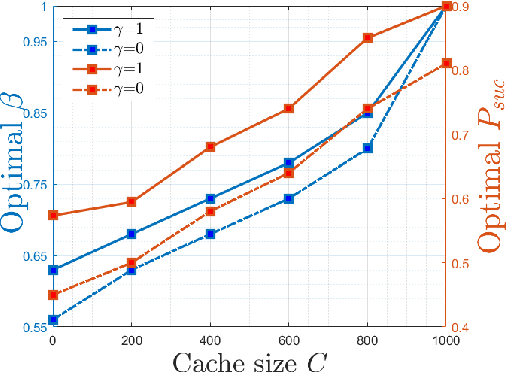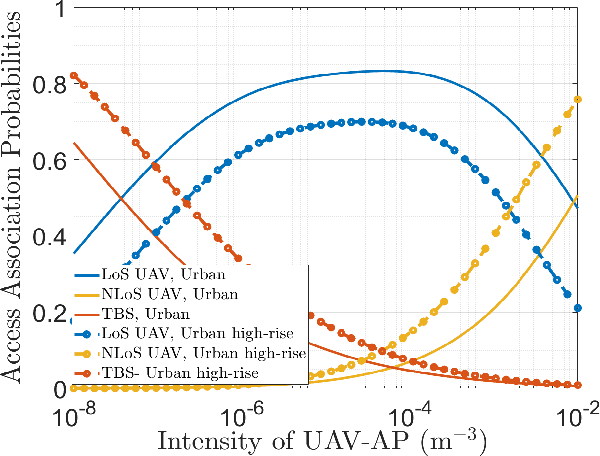Cache Enabled UAV HetNets Access xHaul Coverage Analysis and Optimal Resource Partitioning
Paper and Code
Jul 14, 2022



We study an urban wireless network in which cache-enabled UAV-Access points (UAV-APs) and UAV-Base stations (UAV-BSs) are deployed to provide higher throughput and ad-hoc coverage to users on the ground. The cache-enabled UAV-APs route the user data to the core network via either terrestrial base stations (TBSs) or backhaul-enabled UAV-BSs through an xHaul link. First, we derive the association probabilities in the access and xHaul links. Interestingly, we show that to maximize the line-of-sight (LoS) unmanned aerial vehicle (UAV) association, densifying the UAV deployment may not be beneficial after a threshold. Then, we obtain the signal to interference noise ratio (SINR) coverage probability of the typical user in the access link and the tagged UAV-AP in the xHaul link, respectively. The SINR coverage analysis is employed to characterize the successful content delivery probability by jointly considering the probability of successful access and xHaul transmissions and successful cache-hit probability. We numerically optimize the distribution of frequency resources between the access and the xHaul links to maximize the successful content delivery to the users. For a given storage capacity at the UAVs, our study prescribes the network operator optimal bandwidth partitioning factors and dimensioning rules concerning the deployment of the UAV-APs.
 Add to Chrome
Add to Chrome Add to Firefox
Add to Firefox Add to Edge
Add to Edge